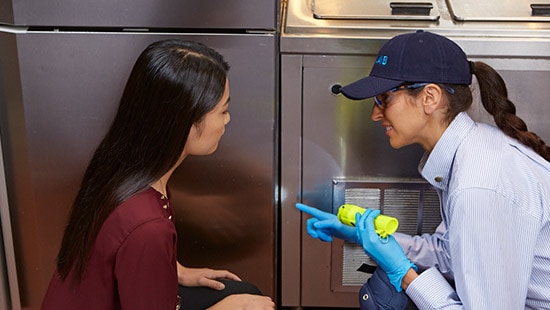What is Integrated Pest Management (IPM)?
Pest Press Newsletter

Integrated Pest Management (IPM) has become the very foundation of virtually all pest management programs. According to an article by Texas A&M University, “The concept and impetus for IPM grew out of the discontent with using a purely insecticidal approach to insect control in many areas in the 1950s.” Pesticide overuse was resulting in insect resistance and environmental damage, so the concept of integrated control, which emphasized the use of selective insecticides, was developed.
It was later expanded into what we know today as IPM; that is, what A&M describes as: “What began 30 years ago as a lofty notion to partner with nature when controlling pest problems has blossomed into a nationally accepted practice that saves the environment, money, and reduces pesticide use.”
So, what is IPM? IPM is a holistic approach to pest management, involving a partnership between the pest management company and the commercial facility, for the control of insects, rodents, and other problem pests. It is a method advocated as “an effective and environmentally sensitive approach to pest management that relies on a combination of common-sense practices,” by the EPA. They describe IPM as using current, comprehensive information on the life cycles of pests and their interaction with the environment, in combination with available pest control methods to manage pest damage by the most economical means, and with the least possible hazard to people, property, and the environment.
- Inspection. The first step of an Integrated Pest Management Program is the thorough inspection of the interior and exterior of the structure. The primary purpose is to determine the presence of any existing pests as well as any conducive conditions that may attract pests of any type.
- Identification. From the inspection, an identification is made of existing pests to determine the extent of the population, cause of their presence, and the most effective method of control.
- Prevention. The inspection also reveals areas where preventive controls can be implemented to eliminate potential entry – or re-entry – of pests and reduce their ability to survive in the facility. This can include measures such as increased sanitation, exclusion (as discussed here), employee training, etc. Ongoing monitoring also provides preventive control by alerting you to pest presence before it can become an infestation.
- Control. Based on the existing pests that were identified and the potential threats of the unique environment and conditions of your establishment, a control plan will be developed. The initial focus will be on physical and mechanical methods, similar to the exclusion and sanitation methods of prevention, as well as trapping and other applicable non-chemical measures. Although pesticides are used in an Integrated Pest Management program, they are used only when necessary.
- Documentation. Documenting all that is done not only records and validates your IPM efforts, it enables you to proactively manage pest risk by understanding and preventing issues of the past from re-emerging. It is particularly applicable when electronic reports are maintained by your service provider in a secure, easy-access system.
Implementing a comprehensive Integrated Pest Management program can help protect your facility from pests and guard against negative customer reviews.


